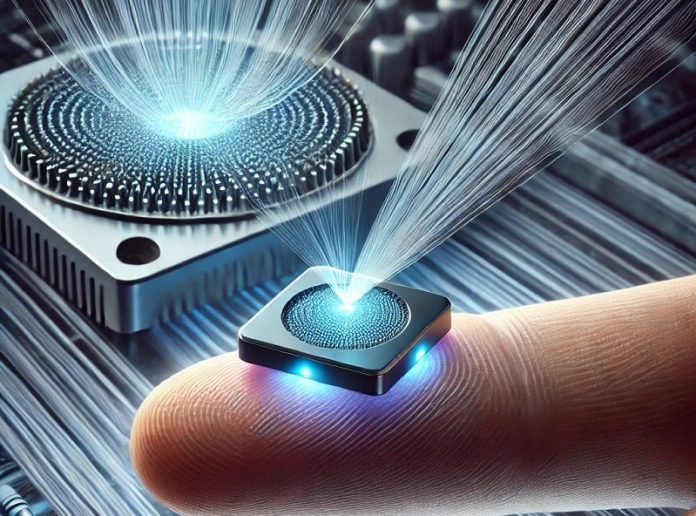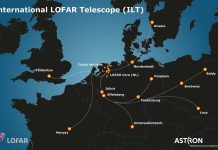
Quantum computers use special bits called qubits, which are often made from microwave photons—tiny particles of microwave energy.
These microwave qubits are useful because they are easy to control and can be made using existing technologies.
However, they only work at extremely cold temperatures—close to absolute zero.
That’s because any warmth creates too much noise, which quickly destroys the fragile quantum information.
This presents a big problem. Microwave qubits can’t travel long distances through regular internet cables because they lose their information in warmer environments.
But optical photons (used in fiber-optic internet cables) can travel much farther at room temperature.
Scientists have been trying to convert microwave photons into optical ones so quantum computers can communicate over long distances, just like today’s computers do over the internet.
Now, a team led by Mohammad Mirhosseini, a professor at Caltech, has created a new on-chip device that may solve this problem. Their tiny silicon transducer can turn microwave photons into optical photons using a clever step-by-step process. Their work was recently published in Nature Nanotechnology.
Here’s how it works: The device contains a very small silicon beam that can vibrate at 5 gigahertz (GHz). This beam connects to a microwave resonator, which is like a tiny box where microwave photons bounce around. When a microwave photon enters, it makes the beam vibrate. Then, with the help of laser light, that vibration is turned into an optical photon.
While it’s hard to directly link microwave and optical photons, it’s easier to go through a mechanical step in the middle, says William Chen, a Caltech graduate student and co-lead author. That middle step—the vibrating beam—acts like a bridge between the two types of photons.
One of the biggest challenges in this type of work is keeping noise low. Noise refers to unwanted signals that can interfere with the real ones. The team built their device out of silicon, which doesn’t heat up much under laser light. This helped them keep noise levels very low.
Their device also works 100 times better than older systems at converting microwave photons into optical ones, with the same level of noise. Plus, it’s easier to make on a larger scale.
This exciting breakthrough could one day help link quantum computers over long distances, bringing us closer to a quantum version of the internet.



